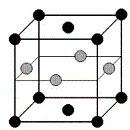Department of Physics and Astronomy: Publications and Other Research

Ralph Skomski Publications
Document Type
Article
Date of this Version
2014
Citation
Annu. Rev. Mater. Res. 2014. 44:451–77
doi 10.1146/annurev-matsci-070813-113457
Abstract
The mandate to reduce greenhouse gases will require highly efficient electric machines for both power generation and traction motor applications. Although permanent magnet electric machines utilizing Nd2Fe14B-based magnets provide obvious power-to-weight advantages over induction machines, the limited availability and high price of the rare earth (RE) metals make these machines less favorable. Of particular concern is the cost and supply criticality of Dy, a key RE element that is required to improve the high-temperature performance of Nd-based magnetic alloys for use in generators and traction motors. Alternatives to RE-based alloys do exist, but they currently lack the energy density necessary to replace Nd-based magnets. Many of these compounds have been known for decades, but serious interest in their development waned once compounds based on RE elements were discovered. In this review, intrinsic and extrinsic materials factors that impact the optimization of both existing and potential future permanent magnets for energy applications are examined in light of new insights gained from renewed examination.


Comments
US govt